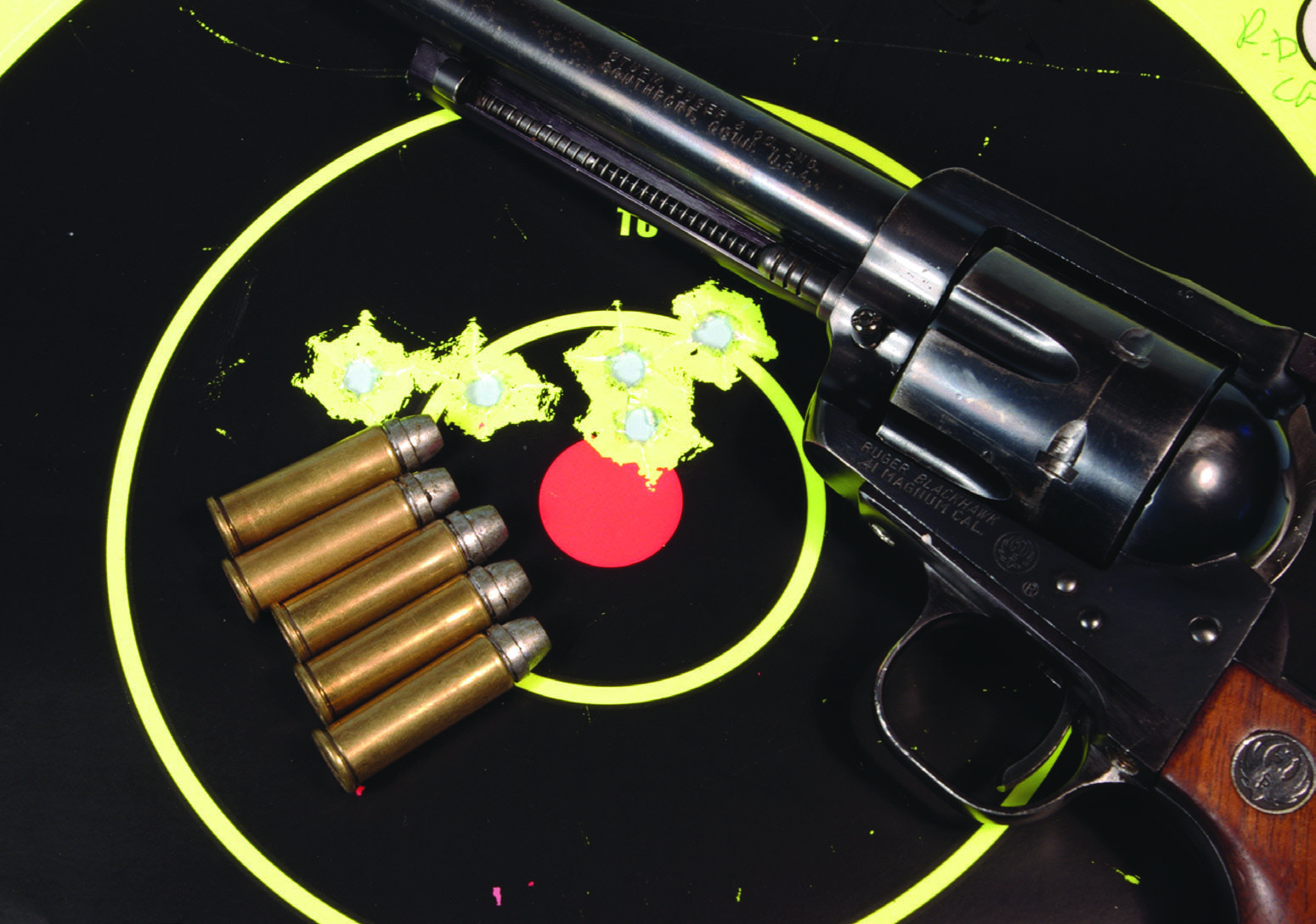- Joined
- Feb 2, 2019
- Messages
- 183
- Reaction score
- 94
I first used Unique almost 60 years ago when I helped load 45-70 cartridges for a friend's original trapdoor Springfield. As I remember it, we loaded 13 grains and filled most of the case with oatmeal. It worked. We also loaded 44-40 cartridges for his Colt Single Action Army revolvers with it.
When I became interested in muzzleloading guns a couple of years ago I remembered this experience and I have been applying the lessons learned then to modern muzzleloaders. Looking for a good article about Unique, I came across this:
Unique
Author: John Haviland / Wolfe Publishing Co.
Date: Mar 01 2010

This 25-yard group was shot with Unique and 210-grain cast bullets from a .41 Magnum.
After years of shooting different rifle and handgun cartridges and shotshells, I finally burned up the last of an 8-pound keg of Alliant’s Unique. All that shooting shows Unique truly is the most versatile propellant on the market and has been since it was introduced back in about 1898. Unique is a circular, flake-type, double-base powder that contains nitrocellulose and nitroglycerin. Nitroglycerin plasticizes powder kernels somewhat, and this coating makes the powder impervious to moisture in the air and also keeps it from drying out. That gives the powder more consistent velocity and pressure, and in the end, better accuracy. A jar of Unique powder sits on the shelf at the Alliant Powder plant in Radford, Virginia. The Unique in the jar was made in 1899 and still performs to original specifications.
Old Unique supposedly left a few partially burned flakes in a bore. That was the only residue Unique left in the bore, but shooters thought that meant Unique was a dirty burning powder. So a few years ago, Alliant made Unique powder flakes more uniform, so the powder burned more completely. Alliant also did a few other things to make Unique burn more completely, but that’s its secret.
Unique’s flake shape helps it meter precisely from a powder measure, which is a big plus while loading hundreds of cartridges. However, because only a light amount of Unique is normally loaded in handgun and rifle cases, care must be taken to make sure only one charge of the powder is dispensed into a case. I load a block of 50 handgun cases with the powder and then put the block under a light to make sure the proper amount of powder is in each case. To check rifle cases, I shine a light in each case to make sure a charge, and only one charge, of powder is in the cases.
https://loaddata.com/Article/LoadDevelopment/Unique/121
When I became interested in muzzleloading guns a couple of years ago I remembered this experience and I have been applying the lessons learned then to modern muzzleloaders. Looking for a good article about Unique, I came across this:
Unique
Author: John Haviland / Wolfe Publishing Co.
Date: Mar 01 2010

This 25-yard group was shot with Unique and 210-grain cast bullets from a .41 Magnum.
After years of shooting different rifle and handgun cartridges and shotshells, I finally burned up the last of an 8-pound keg of Alliant’s Unique. All that shooting shows Unique truly is the most versatile propellant on the market and has been since it was introduced back in about 1898. Unique is a circular, flake-type, double-base powder that contains nitrocellulose and nitroglycerin. Nitroglycerin plasticizes powder kernels somewhat, and this coating makes the powder impervious to moisture in the air and also keeps it from drying out. That gives the powder more consistent velocity and pressure, and in the end, better accuracy. A jar of Unique powder sits on the shelf at the Alliant Powder plant in Radford, Virginia. The Unique in the jar was made in 1899 and still performs to original specifications.
Old Unique supposedly left a few partially burned flakes in a bore. That was the only residue Unique left in the bore, but shooters thought that meant Unique was a dirty burning powder. So a few years ago, Alliant made Unique powder flakes more uniform, so the powder burned more completely. Alliant also did a few other things to make Unique burn more completely, but that’s its secret.
Unique’s flake shape helps it meter precisely from a powder measure, which is a big plus while loading hundreds of cartridges. However, because only a light amount of Unique is normally loaded in handgun and rifle cases, care must be taken to make sure only one charge of the powder is dispensed into a case. I load a block of 50 handgun cases with the powder and then put the block under a light to make sure the proper amount of powder is in each case. To check rifle cases, I shine a light in each case to make sure a charge, and only one charge, of powder is in the cases.
https://loaddata.com/Article/LoadDevelopment/Unique/121







